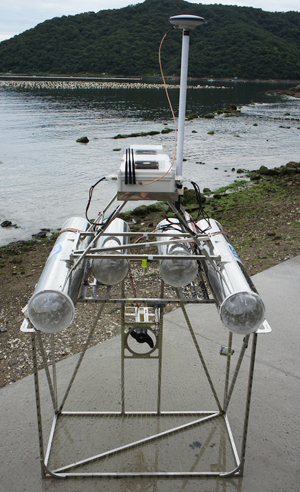With the continuing collapse of fisheries around the world, a new balance of power is being set in the open oceans — one where jellies are the dominant biomass, not more modern vertebrates. This is not good.
Unlike fish, jellies basically go where ever the current takes them. Unfortunately, this often leads them — lots of them, as many as a million or more per swarm — into conflict with human activity. This includes stings inflicted by those washed ashore, which killed one South Korean child earlier this year, as well as clogging nuclear reactor intake pipes. And, what’s more they seem to be experiencing a major population boom.
Lene Moller, a researcher at the Swedish Institute for the Marine Environment, told NPR:
“It’s one of the species that can bloom in extreme areas that … are overfished or have bad conditions,” said Moller. “The moon jelly likes these types of waters. They don’t care if there are algae blooms, they don’t care if the oxygen concentration is low. The fish leave … and (the moon jelly) can really take over the ecosystem.”
And that’s where Korean Advanced Institute of Science and Technology (KAIST) robotics professor Hyun Myung’s fleet of autonomous ROV’s (Remotely Operated Vehicles) come in. Dubbed the Jellyfish Elimination Robotic Swarm (JEROS), Myung and his team recently tested a prototype fleet in South Korea’s Masan Bay.

The JEROS robots independently patrol an area of ocean, using on-board cameras and computer vision to locate and identify jellies. Once a target is identified, the JEROS ROVs organise into an advancing phalanx — interestingly, only the lead robot actually navigates, the rest only follow suit directed over a ZigBee data link. Any jellyfish caught up in the JEROS’ nets are directed towards a central propeller which shreds the invertebrates.
The JEROS is nothing if not efficient. A trio of these robots travelling at 6.4km/h can exterminate 900kg (6000 individuals) of jellies every hour. Not bad given that the average organism weighs about 150g.
While the method may seem inhumane to some, it helps to remember that jellies are comprised of between 96 and 97 per cent water, lack all but the most rudimentary consciousness, and are roughly as sentient as a bowl of salad. Seriously, the Deadites felt more pain. [KAIST via Spectrum IEEE, Treehugger – Images: KAIST, gif by Nick Stango @nstango]

